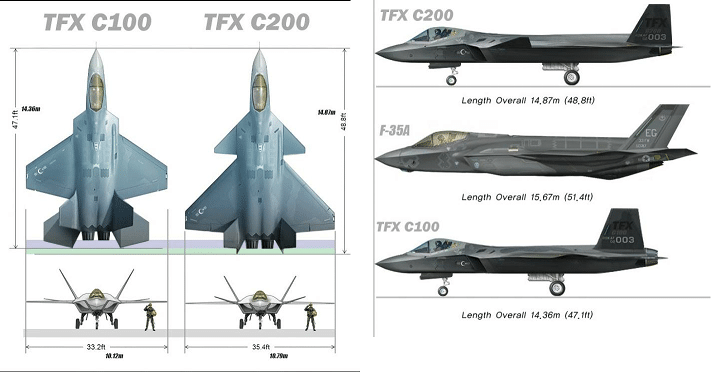While Italy announced its joining the British Tempest new generation combat aircraft program a few days ago, the CEO of Dassault Aviation, Eric Trappier, expressed his concerns concerning the procrastination and divergences that have appeared between Paris and Berlin regarding the FCAS program, warning against excessive postponement of the signing of the contract establishing the development of the demonstrator, scheduled to fly in 2026. And the Franco-German program joins by Madrid, which showed so much confidence not long ago, and which did not hesitate to publicly denigrate the Tempest program, now finds itself in an uncomfortable, not to say worrying, situation.
Indeed, the German prevarications, since presented in this way, are based on several strategic and dimensioning aspects of the program, such as industrial sharing, the method of financing the program, its parliamentary control, export policy and even certain technological axes. Suffice to say that the FCAS program, apart from the preliminary study financed at the beginning of the year, has not advanced an inch, certain strategic aspects, such as the nuclear or naval capacity of the system, not having even made the subject of a firm agreement between Paris and Berlin. These differences are exacerbated by those linked to the new generation Franco-German MGCS battle tank program, regarding which the German group Rheinmetall is leading a political and media offensive in the Bundestag to try to obtain majority control of the program, to the detriment of the strict parity resulting from the Nexter-Krauss Maffei Wegman association in the KNDS group.
These divergences, which are all largely predictable since they are identical to those which derailed so many cooperation programs in Europe, are further reinforced by a mutual distrust between the two BITDs, the French judging the Germans focused on the commercial and financial aspects to the detriment operational performances, the Germans believing that the French are seeking to monopolize the entire program, leaving Germany only the role of banker. As for the Tempest, which the rallying of Sweden, then Italy, only gives credibility, it appears more and more as a credible alternative for Berlin, and in particular for the Bundestag, if Paris were to not take into consideration its requirements.

However, the Tempest in no way constitutes an alternative to the FCAS, since it takes its paradigms, and the structure, the arbitrary interdependence of the MGCS and the Eurodrone minus. Like the latter, it will represent the only development of combat devices for its participants between 2020 and 2050, and will therefore generate the same problems of industrial sharing, as well as exports and budgetary control, each country wishing to preserve its own BITD. In addition, two of the members of the program are equipped with F35s, which can create an imbalance in the objectives and missions assigned to the Tempest, compared to a country only equipped with Typhoon, like Germany, or Spain, once the Tornado and F18 were withdrawn from service. Conversely, this would allow France to fully exploit its own BITD, without notions of complex industrial sharing, but would limit the volume of devices to be built, and would place the development and manufacturing costs entirely on French public finances, notion which we know is not relevant, but which is nevertheless widely put forward.
The obstacles around the FCAS and TEMPEST programs are unfortunately the same as when the programs started, and will remain so until the fundamental questions have been addressed with courage and foresight, namely the incompatibility between the number of European actors, and the mass of work required to design a new combat aircraft. In fact, the division into two programs is simply essential today to preserve the know-how replicated between countries, which brings together 4 integrators, 3 engine manufacturers, 8 developers of on-board systems and 5 manufacturers of weapons systems... On the other hand, by developing two identical aircraft, namely 25th generation stealth 30/6 ton class twin-engine aircraft, the two programs cannibalize each other, reducing addressable domestic volumes and export potential, increasing prices units of the 2 devices. And as has already been said, neither program will be able to claim the title of European program, since their price will put them beyond the reach of more than half of the members of the union...

We can never repeat it enough, the only alternative today, to emerge from the top of this storm, is based on the transformation of the FCAS and Tempest programs into a program of Programs, to design and manufacture not a device with two different names , but 3 different aircraft, namely a light single-engine fighter, a medium embarked fighter, and a heavy air superiority fighter, as well as combat drones, over a period of 35 years, with reinforced technological tiling. Not only would this approach make it possible to integrate the 6 major European aeronautical BITDs without imposed technological impasse, but would provide a range of complementary aircraft allowing extensive positioning on export markets, optimization of aircraft prices and therefore air force formats. European and allied organizations, all in recursive planning over 35 years, so as to develop know-how and European cooperation over the long term in a positive dynamic.
Above all, such an approach would not be more expensive for public finances, in the sense that we only take into consideration the sums invested by the States, than the sum of the investments made by all the partners of the FCAS and Tempest programs.
